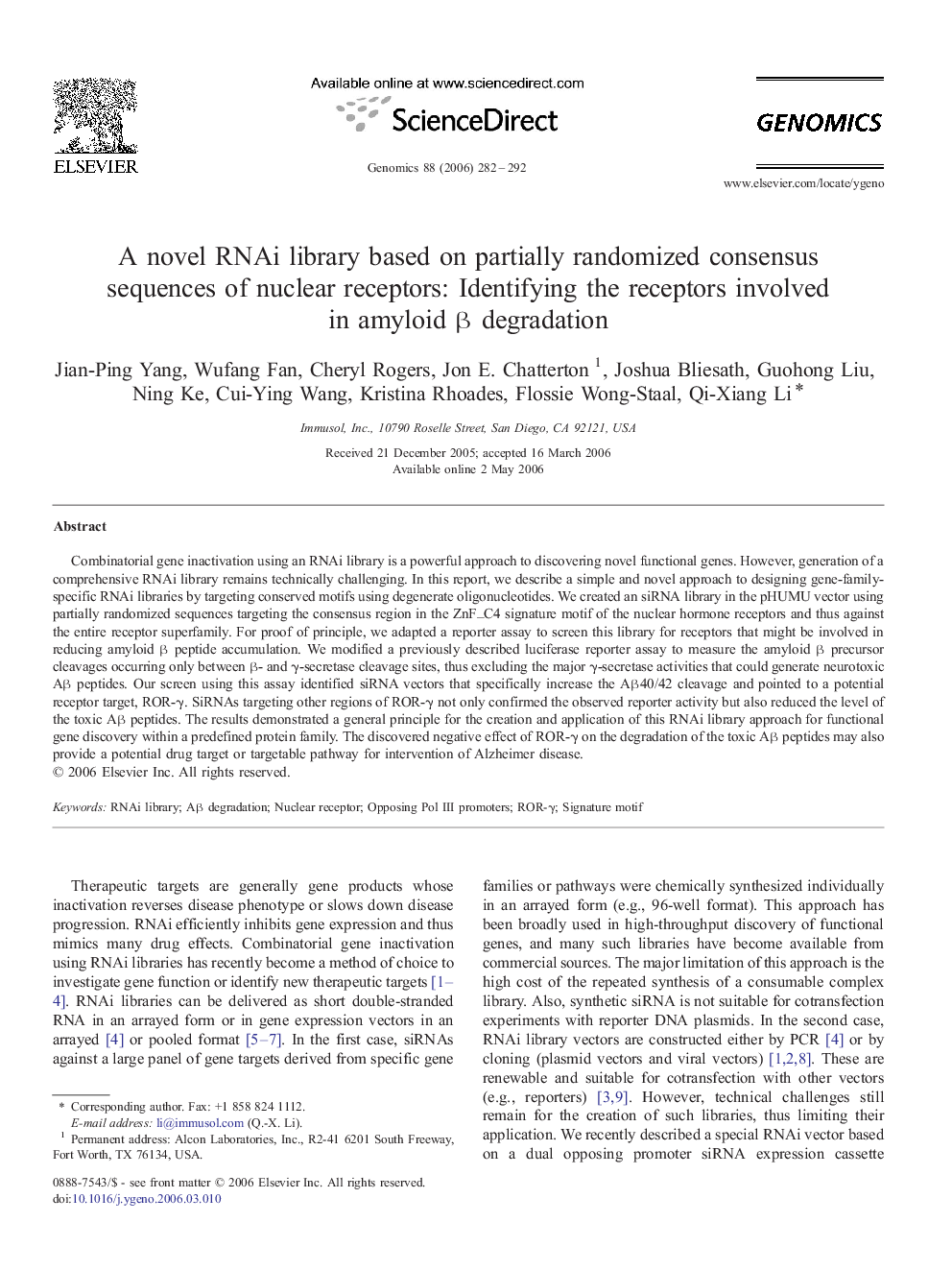| Article ID | Journal | Published Year | Pages | File Type |
|---|---|---|---|---|
| 2821675 | Genomics | 2006 | 11 Pages |
Combinatorial gene inactivation using an RNAi library is a powerful approach to discovering novel functional genes. However, generation of a comprehensive RNAi library remains technically challenging. In this report, we describe a simple and novel approach to designing gene-family-specific RNAi libraries by targeting conserved motifs using degenerate oligonucleotides. We created an siRNA library in the pHUMU vector using partially randomized sequences targeting the consensus region in the ZnF_C4 signature motif of the nuclear hormone receptors and thus against the entire receptor superfamily. For proof of principle, we adapted a reporter assay to screen this library for receptors that might be involved in reducing amyloid β peptide accumulation. We modified a previously described luciferase reporter assay to measure the amyloid β precursor cleavages occurring only between β- and γ-secretase cleavage sites, thus excluding the major γ-secretase activities that could generate neurotoxic Aβ peptides. Our screen using this assay identified siRNA vectors that specifically increase the Aβ40/42 cleavage and pointed to a potential receptor target, ROR-γ. SiRNAs targeting other regions of ROR-γ not only confirmed the observed reporter activity but also reduced the level of the toxic Aβ peptides. The results demonstrated a general principle for the creation and application of this RNAi library approach for functional gene discovery within a predefined protein family. The discovered negative effect of ROR-γ on the degradation of the toxic Aβ peptides may also provide a potential drug target or targetable pathway for intervention of Alzheimer disease.
